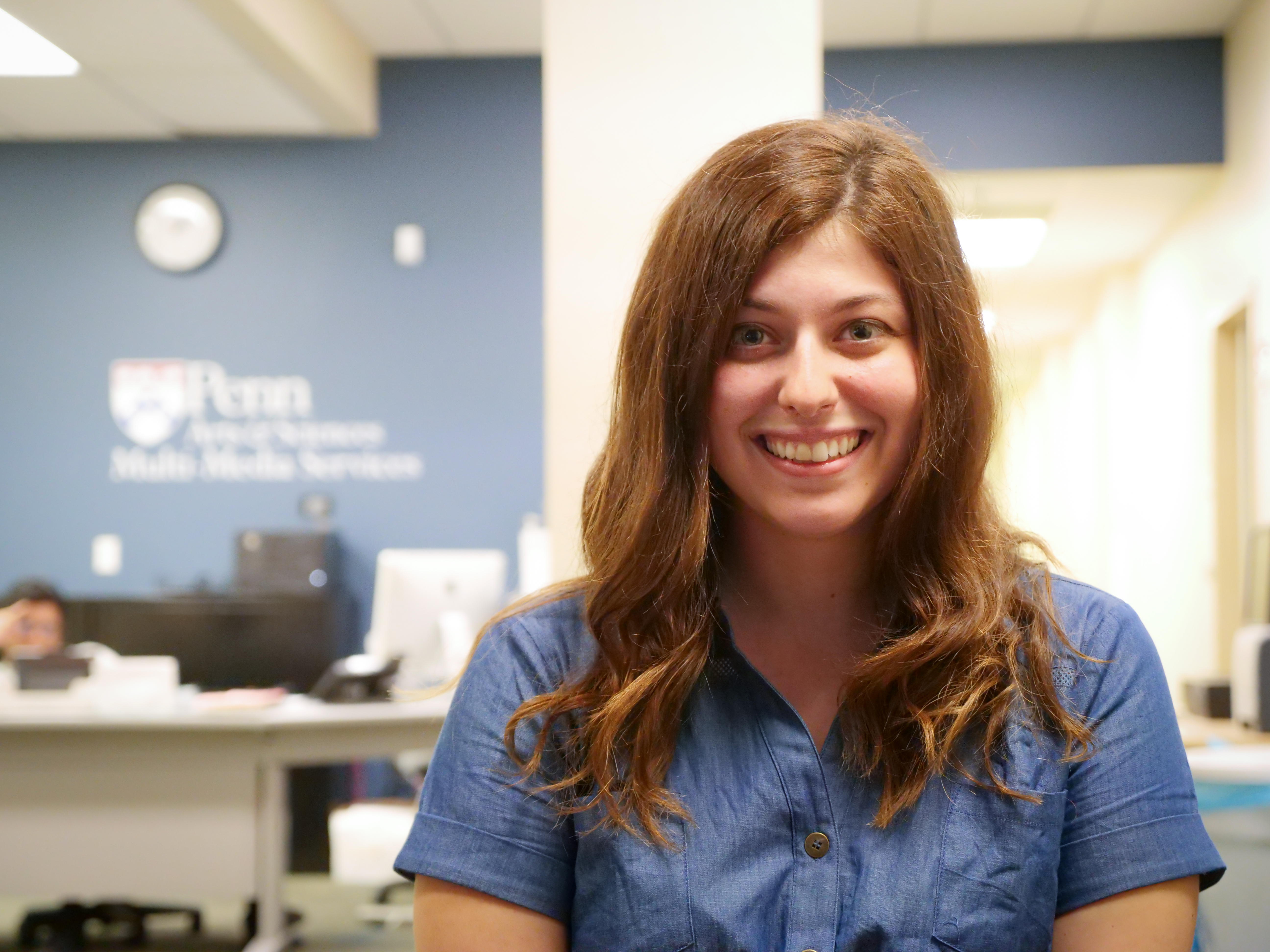Robyn Barrow, a second-year doctoral candidate in the Department of History of Art, says she didn’t have many opportunities to observe art objects firsthand while growing up in Little Rock, Arkansas. The Crystal Bridges Museum of American Art—featuring pieces from Rockwell and Warhol—wasn’t built in nearby Bentonville until 2011. Thus, it wasn’t until Barrow took AP art history during her senior year of high school that she became enamored with art objects and their pasts.
“I became excited by what an art object could say about the past that a document can’t,” explains Barrow, who specializes in Medieval and Byzantine art. “They are the truest witnesses for me. I love the idea of touching history in a very literal, tactile way.”
This past summer, Barrow completed a Mellon fellowship at the Philadelphia Museum of Art (who partners with the Penn Department of Art History) with support from the Price Lab for Digital Humanities. The Price Lab encourages the innovative use of technology in the study of history, art, and culture and was eager to support Barrow’s project to create a 3-D model of a post-Byzantine boxwood cross stand using software called Agisoft Photoscan.
“The mission of the Price Lab is to help humanists at Penn become more thoughtful users, creators, and critics of digital technology and you can't do any of that without access to the right tools,” says Stewart Varner, managing director of the Price Lab. “We are seeing a lot of curiosity about experimenting with tools, especially 3-D tools, within the humanities. One role the Price Lab plays is figuring out how to make those experiments happen and we were happy to do that with Robyn’s project.”
For Barrow, the boxwood cross stand project is special.
“I really love this thing,” Barrow says. “The finesse, depth, and detail of the miniscule scenes and its tower-like construction are wonderful. To be able to reproduce it digitally feels like magic.”
Barrow chose the cross stand because of the uniqueness of its material. Boxwood had a particular resonance for the Byzantines. It was considered an auspicious variety of wood because it was purported to be one of the materials used to construct the original cross of Christ’s crucifixion.
The stand features carved biblical scenes and a Greek inscription that has yet to be deciphered. The object is in relatively poor condition; Barrow hopes that a 3-D-rendering will make studying the delicate imagery and solving the mystery of the inscription easier to achieve. With a 3-D-model, viewers can magnify the details as needed from every angle and for those who can’t view the object in person, the 3-D rendering can be viewed online.
Barrow describes herself as a “true medievalist” with no former technical expertise. Yet, she considers the 3-D project a natural extension of her admiration for the period. “In medieval times, artisans and scholars were incredibly innovative, bringing new sources and inventions into their practices to try to understand the world. Participating in the digital humanities is a 21st-century attempt at the same kind of rigor.”
To create the 3-D-model, Barrow took approximately one hundred photographs of the object from all vantage points. Using a Photoshop-like tool, she edited out the backgrounds. Then, with Agisoft Photoscan, Barrow uploaded the images and rendered a single 3-D-model. A rendering can be made in a single afternoon once a user understands the software, she says.
“I can see this software being useful for a number of disciplines,” says Barrow. “ I want people to know it is here and available for them.”
In addition to the cross stand, Barrow has taken initial steps to complete a 3-D-rendering of an oak panel bearing a coat of arms that was hidden on the back of a linenfold wall panel until 2015. As part of her fellowship work, Barrow discovered where the panel derived from and to whom it belonged. After meticulous research and conferring with others in the UK, Barrow has attributed the coat of arms to Mary Shelton, a significant figure from Tudor history. Shelton was the cousin (and lady’s maid) of Anne Boleyn, the ill-fated second wife of King Henry VIII. The panel comes from a home once owned by the Shelton family, Carrow Abbey, in Norwich, England.
Barrow sees her 3-D projects as examples of what’s ahead for the humanities, citing increasing pressure within the field to acquire and demonstrate digital skills. She predicts that digital tools will inject “vibrancy and excitement” into the humanities and believes the Price Lab is a critical catalyst for that evolution.
Varner agrees the Price Lab is positioned to ramp up digital usage within the field and has recently taken big steps. The Price Lab launched a digital humanities minor a year ago and will announce a graduate certificate imminently. In addition, Varner says, the Price Lab and the Library will co-host a week-long digital humanities training event next summer called DReAM Lab (Digital Resources and Methods).
“We're also trying to create opportunities for students to learn how to use tools once we have them,” explains Varner.
Barrow hopes to help the Price Lab in this mission. “I’m ready and willing to host a tutorial on the 3-D imaging software for anyone, at any time.”
Learn more about Barrow's work in the video feature below (images and video courtesy of Sarah Milinski).



